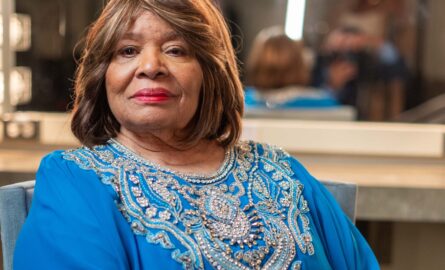Off to a Great Start
We started Telehealth Academy II with an expert-packed virtual session with speakers and guests joining us from all over the country. Nashville Entrepreneur Center’s Jeremy Raley welcomed the group and introduced Bret Larson, Co-Founder and CEO of eVisit, Telehealth Academy’s presenting sponsor.
Larson shared his insight into the current state of telehealth stating, “CIOs are recognizing that there is a large difference between two-way video and virtual care.”
He also spoke on the need he’s seen healthcare executives have on finding a partner who can be with them as they look for ways to incorporate evolving care delivery strategies. This ended in a call for providers to treat people not as patients but as consumers. “As we’ve seen the industry change, what we’ve realized is the pandemic actually accelerated the consumerization of care.”
From there, Jeremy gave a much-deserved thank you to the expert members of the council that came together to form the curriculum for this year’s Telehealth Academy.
Council Turned Panel

We were joined by seven of the 10 council members for a panel discussion on how their organizations are currently implementing technology-enabled solutions. Phil Gibbs of The Disruption Lab led the discussion, digging into their thoughts around the biggest surprises they’ve seen around telehealth this year and how they will be looking at new entrants, such as Amazon and CVS, that are breaking into the healthcare space with significant investments in physical and virtual presence.
One point that was agreed by all panel members, is the prediction that telehealth isn’t going anywhere – obviously catalyzed by the pandemic, telehealth and virtual care utilization is estimated at 20-30 times higher than pre-pandemic volumes.
“I think there’s going to be a new normal where we settle in as to how we strike the balance between in-person care and virtual care and how those two really fuse together to become just care,” says Bruce Brandes, President, care.ai.
To echo Brandes, Ellen Kelsay, named a semifinalist in Modern Healthcare’s 100 Most Influential People in Healthcare, said that the rush to telehealth because of the pandemic is now over and leads to a future with possibilities but also some critical issues.
“As I look at the current landscape I would use three words, there’s unbelievable promise, tremendous potential but also the risk for peril,” says Ellen Kelsay, president and CEO, Business Group on Health. Risks identified include data integration, increasing utilization without impacting quality of care, and widening health disparity for underserved populations.
Keynote Speakers
After the insightful panel discussion set the stage, our four keynote speakers took the digital floor one at a time. First up was Jacqueline Shreibati, MD, Senior Clinical Lead at Google.
Jacqueline Shreibati, MD
Senior Clinical Lead, Google
Low Tech Meets High Tech

Dr. Shreibati has an interesting perspective on health tech – she simultaneously leads physicians and product managers at Google on products such as FitBit, NestHub, Pixel Phone, Pixel Watch, and Google Play. She noted that 75% of people turn to the internet when seeking care and one-third of Americans are wearing smart watches or devices that monitor certain aspects of health. Dr. Shreibati also takes care of low-income patients at a Federally Qualified Health Center with cardiology needs, where both patient and provider tools are low-tech in nature. She has an excellent perspective on both high-tech and low-tech tools utilized by patients and providers and the intersection around convenience for both.
Pagers, healthcare apps, smartwatches, notebooks, and fax machines. Dr. Shreibati shared that all of these things, the low tech and high tech, all play a role in completing a patient’s health picture. She argued that it doesn’t matter if a solution is technologically advanced or as simple as a written blood pressure log, what makes a solution stick is its level of convenience.
Dr. Shreibati says, “Many of our values as consumers orbit around convenience whether you’re a patient or clinician. We want tools that are easy to use, that are simple, uncomplicated, and easily understood, that are fast, and, in the clinical world, must fit into the workflow. Which is another way of saying a tool can’t slow anyone down.”
This orbit of convenience that Dr. Shreibati shared with the audience can help health care providers and organizations hone in on what will work for their patients and workflow. To help providers determine if a technology is the best tool, she posed three questions to ask 1) Is this the most convenient tool to get the job done?, 2) If there is a better alternative, what are the barriers to use?, and 3) How can I help lower those barriers?
Read more about Jacqueline Shreibati, MD
[link: https://ec.co/speaker/dr-jacqueline-shreibati-md-ms-facc/ ]
Brian Wayling
Executive Director, Technology & Development, Intermountain Healthcare
Telehealth: The Intermountain Healthcare Story

This is Brian Wayling’s second time joining the Telehealth Academy lineup and we are so honored to have him as part of the council. This year he shared with the audience the story of his own organization, Intermountain Healthcare, which served as a case study for how a large-scale implementation of the latest in digital healthcare can radically change what care looks like for the rural areas of the country.
The Intermountain Healthcare system consists of 33 hospitals with 59,000 providers in Western States where there is significant distance between physical care sites for most residents. Wayling shared the Intermountain focus for digital health centered on being consistent in the quality of care, enabling all providers with access, strategically distributing resources across their network, and incorporating the high- and low-tech resources, all while keeping pricing reasonable and consistent.
He also shared an overview of their 20,000-square-foot Telehealth Virtual Hospital, which encompasses patient monitoring, clinical services, patient access/transport, and clinical operations. Although his company has invested significantly in telehealth and digital upgrades, he is excited about newcomers into the space and what everyone can accomplish together.
Wayling shared his thoughts on new entrants and retail health organizations by noting their physical presence and ability to collaborate with incumbent providers is certainly welcomed, and necessary.
“I don’t think anyone will argue that there’s too many points of care,” says Wayling. “What we all need to do though, whether it’s Amazon or Google or Walmart and all of our healthcare systems, is how do we work together to provide efficient care collectively and can we provide care safely.”
Read more about Brian Wayling
[link: https://ec.co/speaker/brian-wayling/ ]
Meg Barron
VP, Digital Health Innovation, American Medical Association
With
Cynthia Church
Chief Strategy Officer, Xealth
Show Me the Outcomes: Leveraging a Virtual Care Value Framework

Wrapping up our keynote talks were Meg Barron and Cynthia Church who collaborated on a presentation that gave a wide view of the current state of telehealth around the country. One aspect of their findings showed that physicians considering the adoption of telehealth are largely considering four things: does it work, will I receive proper payment, will I be liable, and will it work in my practice? This linked back to the theme of “cutting through the noise,” showing that now the focus on telehealth is searching for proven solutions around optimized implementation and reduction of challenges.
Barron touched on the increasing need from both the physician and patient perspective, saying, “And now more than ever…with physician burnout at an all-time high, and chronic disease and behavioral health needs surging for patients across the country, the need for technology to play a central role is absolutely critical.”
After Barron shared the many telehealth resources that the American Medical Association provides, and encouraged others to share their experience online, Cynthia Church dove into some compelling data on the real-world usage of telehealth, virtual care, and digital health tools and resources.
Church showed how Xealth has taken its 150 digital health initiatives, spanning from simple education to complex RPM (remote patient monitoring) programs, and created categories based on shared objectives of the initiatives. From there she shared which categories their partners saw the most success with. They included Women’s Health with 12 system deployments and a 73.3% interactive patient percentage, followed by Behavioral Health being used in 8 systems with an 80.1% interactive patient percentage.

Church concluded her presentation by highlighting a potential area of digital health that remains underutilized.
“Chronic disease management, that has high engagement but …the number of patients enrolled is small. The volume of patients being reached through things like virtual care enablement or just general outreach is high versus preventive care and chronic disease management.”
Read more about Meg Barron.
[link: https://ec.co/speaker/meg-barron-mba/ ]
Read more about Cynthia Church.
[link: https://ec.co/speaker/cynthia-church/ ]
That’s A Wrap (for this week)
The last keynote from the American Medical Association and Xealth was a great way to end this first session of Telehealth Academy 2022.
We want to give a huge thanks to our sponsors, council members, and industry experts for making this event packed with valuable insight from a wide range of perspectives! Please join us again next week for another virtual session. If you haven’t already, grab your tickets for our all-day in-person event here in Nashville. We hope to see all of you there!
Next Week:
Signal Vs. Noise: Policy + Business Model + Technology
Business Model Meets Policy – Panel Discussion
Ann Somers Hogg
Senior Research Fellow, Health Care / Christensen Institute
Daniel Graver
Healthcare & Data Privacy Attorney / Akin Gump Strauss Hauer & Feld LLP
Lisa Piercey, MD
Founder & CEO / Tristela
Navigating the Policy Barriers to Health Care Transformation
Krista Drobac
Executive Director / Alliance for Connected Care & Moving Health Home
Emerging Models Of Care Delivery
Bruce Brandes
President / care.ai
Connected Care: The Mayo Clinic Story
Steve R. Ommen
Medical Director, Consumer Products & Platform Strategy, Center for Digital Health / Mayo Clinic




